Poetry Friday One Day Early: A Chat with Denise Doyen In Which Her Thoughts on the Ability of Children to Understand Sophisticated Texts Makes Me Quite Happy
 October 15th, 2009 by jules
October 15th, 2009 by jules
(Click to enlarge spread.)
Yeah. Whew. That’s a long post title, but I enjoyed this conversation with debut picture book author Denise Doyen so much that I wanted to get your attention. Denise—who studied creative writing, poetry, design, and film direction and who directed children’s television for Disney—recently went back to school to focus on writing for children. Her first title—Once Upon a Twice (Random House, August 2009 — cover below), illustrated by the-seven-kinds-of-fabulous Barry Moser—is a cautionary tale (about both the hubris, or “furry overconfidence,” of a young mouse named Jam Boy and the dangers of the night) in the grand tradition of nonsense verse (“clever nonsense words and rhyming verse reminiscent of Lewis Carroll’s ‘Jabberwocky,'” the publisher likes to say). And it’s dark (in regards to both dramatic action and Moser’s lush, richly-dark palette — “a marvel of nighttime beauty,” writes Publishers Weekly) and eerie and beautiful and begs to be read aloud. Or, if you’re Kirkus, it’s “deliciously inventive,” possessing “fresh, inventive wordplay and masterful illustrations.”
-asham’d; / He rambles past the haven reeds.”
(Click to enlarge spread.)
Once I read it, I went knocking at the publisher’s door to see if I could share some of the drop-dead gorgeous spreads from it, and then I found out I had the opportunity, should I be so inclined, to chat with Denise. Having read one review (very obviously, I’m a review-reading geek) that said the text would be a challenge for picture-book readers, I thought it’d be neat to chat with Denise about the book and her thoughts on that, in particular. And that would be because that statement, quite frankly, annoyed me. Denise’s response to that question (final question in this short interview) made me jump up and down and say “WOOT!” a lot. (I also hope to deliver an interview soon with Moser—SQUEE!—if I can just get around to sending him some questions.)
So, let’s get right to it then, since I enjoyed reading Denise’s responses and wanted to share them with you. I thank her for stopping by this morning.
Denise: Good morning, 7ITBB. I am a perennial night owl—definitely not a morning person. (Yawn.) But I got up bright and early especially for this interview.
 Jam Boy, the mouse, and I are having coffee, o.j., and lumpy Irish oatmeal.
Jam Boy, the mouse, and I are having coffee, o.j., and lumpy Irish oatmeal.
Jules: Mmm. Coffee. Pull me out a mug, and I’ll bring the Bailey’s!
Tell me about your process in writing this — and perhaps a bit about how the idea for this came to you.
Denise: The opening stanza for Once Upon a Twice I wrote as text for an exercise in an illustration class. I didn’t want to be an illustrator; I draw well enough but never had that ‘extra something’ that makes art come alive on the page. Still, as a writer, I thought it was respectful and important to understand the craft and concerns of the other side of a picture book. So, I took a class from Ilse Plume. Her prompt was to write, then illustrate, one page of the kind of book you adored as a kid. Well, I loved mysterious-sounding poems like “Jabberwocky” or “The Owl and The Pussycat.” So, out flowed this poetic nonsense quatrain.
(Click spread to enlarge.)
That ‘little exercise’ stanza haunted me. For years. Every so often I’d take it out and attempt to turn it into something more complete. I ended up with dozens of clever nonsense stanzas. (They’re all on my computer in a file called “Stanza Soup.”) But I didn’t have a story. Finally, on a mission, I took my opening stanza to Ann Whitford Paul’s class at UCLA Extension, and—while the rest of the class did her wonderful assignments—Ann let me concentrate on finding my tale. She was very insistent about how to go about it: I needed a protagonist, preferably a child, and he had to have a problem or get into trouble — and then get himself out of it. He should have learned something or changed somehow by the end of the book –- but I shouldn’t moralize. And there had to be action and excitement and heart. “Do all that – and it will work.” Yeah, well.
It took me months and months of trial-and-error (Ann saying “not yet, keep at it”) until I hit on bold, mischievous Jam Boy, and when I did, he delivered a bolt of inspiration; the core twelve stanzas of the story all came to me whoosh in a single afternoon. I’d found my book.
Jules: Did you go through tons of drafts, by chance, to get the nonsense verse just right?
Denise: Ha! That Stanza Soup pot is a gigantic cauldron filled to the brim with rejected contenders. I have stacks of notebooks full of research on Victorian nonsense verse, the habits of mice, archaic English, the etymology of words like “riddle,” and my own scritch-scribbled wordplay.
 My two writing groups (G.O.Y.A. critique group and Barbara Bottner’s master class) patiently commented on draft after draft.
My two writing groups (G.O.Y.A. critique group and Barbara Bottner’s master class) patiently commented on draft after draft.
I did one serious re-write with an editor who eventually, reluctantly, passed because her marketing department didn’t “get” the poem.
The piece was called “The Songs That Mice Sing,” “The Falderal Mice,” {and} even “Jammerwocky” during the three years I was intent on knocking out cleaner, clearer drafts. Barbara finally, helpfully, suggested “Once Upon a Twice” from the first line as a title. Then my agent, Jennifer Rofe, (despite trends toward shorter, sweeter, simpler) sought out just the right editor and sold my “dangerouse”, nonsense adventure.
The most intense and rewarding revision was done with my editor at Random House, Heidi Kilgras. She and I (and the copy editor) really worked and thought over all the final choices of words, nonsense, and punctuation. There were pages written back and forth discussing em-dashes and semi-colons. Pages! I kept a detailed chart which helped me track the internal rhyme scheme (I didn’t want to repeat any rhyme-vowel sounds; each stanza has its own), and I wanted a sweeping distribution of nonsense words. Both Heidi and I studied poetry in college and really love finding ‘the perfect word.’ It was a good editorial experience.
Jules: What was it like to see Barry’s illustrations for your words?
Denise: The first thing I got to see was the book designer’s concept cover—taken from the title page spread in the book—that image of Jam Boy pushing aside the reeds to stare at the moon. I cried. I laughed and I cried and I screamed for my husband, Michael, to come see the wonderful realization of so much hard work by me and my team at Random House and obviously, Barry (oh amazing, fabulous, visionary Mr. Moser!). I was on cloud nine. Still am.
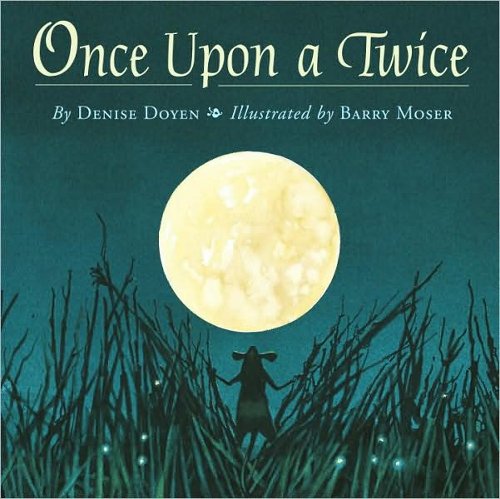
Jules: Reviews for the book have been great, but what do you say to the review that says the book’s verse is a challenge to its intended audience?
Denise: This is one subject where I know with dead certainty that Mr. Moser and I see eye to eye: We can, we should, we must expect the most and deliver the best to our American children.
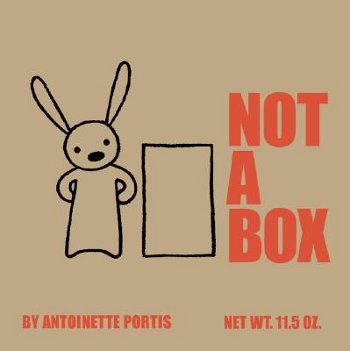 Alongside short, sunny, and adorable fare, we should make room for some full, dark, and beautiful offerings as well. I have nothing against easily-grasped picture books. My bestest writer-friend, Antoinette Portis, slaved over each simple line and every one-syllable word of her wonderful Not a Box. Believe me, I know that a simple-looking gem is not simply arrived at. I adore that book. But, there are all kinds of children out there. And some of us (surely me and Ms. Seven Impossible Things — and librarians, writers, English teachers, editors, copy editors—absolutely copy editors—poets, playwrights, etc.) inherently loved language from the moment our mothers’ sang us our first lullaby. We found solace and joy in poetry — where rhyme and rhythm combined to stir our tiny souls.
Alongside short, sunny, and adorable fare, we should make room for some full, dark, and beautiful offerings as well. I have nothing against easily-grasped picture books. My bestest writer-friend, Antoinette Portis, slaved over each simple line and every one-syllable word of her wonderful Not a Box. Believe me, I know that a simple-looking gem is not simply arrived at. I adore that book. But, there are all kinds of children out there. And some of us (surely me and Ms. Seven Impossible Things — and librarians, writers, English teachers, editors, copy editors—absolutely copy editors—poets, playwrights, etc.) inherently loved language from the moment our mothers’ sang us our first lullaby. We found solace and joy in poetry — where rhyme and rhythm combined to stir our tiny souls.
Abraham Lincoln, John F. Kennedy, and Martin Luther King—our greatest speech-makers and orators—they all were fascinated by words and poetry as kids, and as children each could recite extremely complicated verse by heart, whether Tennyson or the Bible. We know (because they told us so) that their early exposure to the beauty and power of language influenced and encouraged their own personal expression and their adult speechwriting.
But what we don’t know is where the next Robert Frost, Maya Angelou, E.B. White, or Barack Obama will come from. Where ever those youngsters are out there, I truly believe they are best served by having books like Not a Box and Once Upon a Twice on their local library’s shelf. There is currently a kindergartener, Sage Lily, on YouTube who recites Once Upon a Twice by heart with clear understanding and feeling; she learned it in three days. Sage is certainly strong evidence that the bandwidth of picture books should be wide enough to include at least a few ‘literary’ works as well.
Finally (oh, geez, I’m on my soapbox. And before breakfast! Sorry…), take a look at these couplets from arguably our most beloved poem for children:
The moon on the breast of the new-fallen snow
Gave the lustre of mid-day to objects belowand
As dry leaves that before the wild hurricane fly,
When they meet with an obstacle, mount to the sky.
It has not mattered that a three-year-old cannot comprehend all those words or word combinations yet. She can simply look at a picture of Saint Nick and his tiny reindeer and glean meaning from the illustrations in the years before she is able to decipher the more sophisticated passages. In the meantime, she will be entertained by the general scope of the story and by the lyrical sound of the words; and that is a good… no, that is a great introduction to our language. The golden rule we picture-book folk always hear is: a true picture book is equally dependent on its words and pictures to convey the story. Well, my words need Barry’s perfect pictures for the youngest crowd to follow along. That’s okay. That’s exactly as it should be.
(I’m climbing off my soapbox now. Gonna finish my lumpy oatmeal and warm my coffee back up in the microwave. Thanks so much for inviting me.)
Jules: Word UP, Denise. Thanks so much for that and for stopping by. Can’t wait to see what next comes when you put pen to paper.
Laura Purdie Salas has the Poetry Friday Round-up this week.
ONCE UPON A TWICE. Copyright © 2009 by Denise Doyen. Illustrations © 2009 by Barry Moser. Published by Random House, New York, NY. All rights reserved.
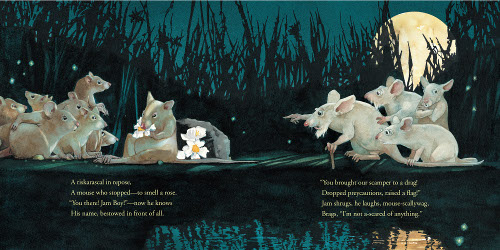
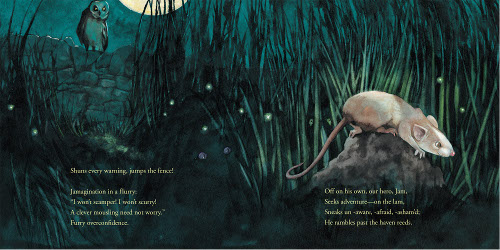

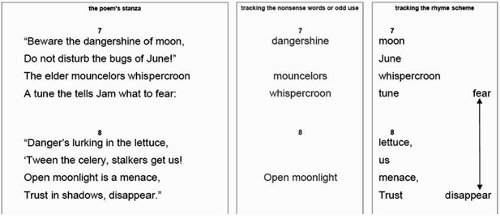

Best blog post I’ve read in a long time – totally WOOT and SQUEE!! just as you say, Jules. I am going right out to buy this book and recommend it to everyone (and I”m glad to see it nominated over at the Cybils – though a bit perplexed at it not being in the Poetry category.) And I’m sharing this post with my students at Vermont College of Fine Arts who often get the flip side of the coin and are intimidated into over-simplifying a bit too often (nothing wrong with simple but nothing wrong with complex, either!) Oh, joy. I love finding a new poet to admire. Thanks, 7ITBB.
Standing on my chair, before breakfast — APPLAUDING. YAY, DENISE!!! Thanks for linking to the little lass reciting. I got chills at her voice — she’s so thrilled with it.
And I’m thrilled. Once Upon A Twice is like Tolkien. I swear. We want to keep our kids safe and teach them things, but then we’re afraid to give them too big of words and too dark of concepts, and sometimes writers tend to write to the lowest common reader. I think children can experience the uncommon as early as picture books. This is awesome.
AND, I agree with Julie: this is poetry. Her way of writing reminds me of my many reams of scratched out lines when I’m composing poetry. The Stanza Soup Pot lives.
This was such a satisfying post. Makes me dream of being able to write again. I’m a little stuck this morning, so this gives me hope. Thanks.
The interview gave me chills, and is still giving me chills. I can’t believe this–we must have this book. One of the things that annoys me the *most* is stupid nonsense words in children’s books. That’s the glory of Jabberwocky (for instance) that I think most grown-ups just don’t understand. These sounds are not arbitrary–they mean what they mean and you can’t just generate random syllables and call it a day.
And that this woman grasps the fact that children don’t have to understand everything all at once, and has spent years on a book precisely for that purpose. We don’t expect adults to understand Jane Austen or Melville or Umberto Eco all at once, so why should it be the same for children?
And also not enough children’s books authors think of me, the parent, having to read the book out loud multiple times. (Even if the kid likes it, sometimes I have to hide the book or give it to Goodwill.) So thank you Denise Doyen, even though we just blew our entire book budget on Sunday.
I’m so there with all of you. Not only I am a huge fan of nonsense, but books like these are *physically* fun to read, too. We forget that our tongue is a muscle and nonsense gives it a workout.
The illustrations are darkly wonderful.
When I read to my daughter, I know a book is really, really good when the first time she hears it she listens attentively and doesn’t ask what the unfamiliar words mean. I just read James Thurber’s Many Moons last night to her for the first time, and such an event took place. I mention this only because I think Once Upon a Twice will have a similar effect. I’m looking forward to reading this book with her. Thank you!
Thanks, you all. I was inspired by this to get out my Graeme-Base illustrated version of “Jabberwocky” and re-read with my four-year-old (as well as Denise’s book, OF COURSE). My girls, ages five and four, have also always been fascinated by “Jabberwocky.”
Such good comments from everyone that I’m just inspired to say, once again, generally: Word up.
And I’m digging out Chris Raschka’s version of the Jabberwock, posted earlier here at 7-Imp (all rights reserved Rascka and Candlewick and all that). I love his version of it. And thanks again to Denise for stopping by:
Denise is so right about exposing kids to words: it enriches their lives, and most of them are used to not understanding everything all the time. They don’t fret about it the way we adults do. Instead, they have the wonderful impulse to try to figure things out, which leads to those repeat readings Christopher mentions. I think this is one reason kids are more open to good art, why they tend to recognize and appreciate it in a way many adults don’t. They are just so actively engaged in figuring out the world, and that’s what art is all about.
Wonderful interview with Denise Doyen. I can’t imagine what she’d have to say if she WAS a morning person! She takes to the forum like a duck to water. I was at her book signing at The Village Book Shop, in the Palisades and thought then that I’d learned everything there was to know about the making of a nonsense poem – but this interview proved me wrong.
This book looks amazing, and she is SO RIGHT about the necessity for complicated verse in certain children’s books. There has to be complexity available for the kids who need it – and plenty of them do!
WOW. I love the long, detailed, intelligent, and fulfilling creative process Denise went through for the book. I too love how she reminds us that children must be given the best – and we must expect the most from them. WOW.
Brilliant writing, illustrations and interview! Thanks for the insight.
This is a picture book I MUST have.
Denise, I couldn’t agree with you more in what you said about language and poetry. Most of these picture books with “challenging” vocabulary are meant to be read aloud to children anyway–at least the first few times. And kids take delight in hearing/saying delicious words like “runcible” and “slithy toves.” Children should read/have read to them all kinds of books–not just those with simple language.
I love Moser’s illustrations!
Every time I hear someone say that a book is too difficult for a kid, I wonder if the other grown-ups always understand everything they read. I don’t.
Jules and everyone,
Thank you all so very much. I’m happy to have been a part of such a passionate and thoughtful conversation regarding more sophisticated fare for kids.
I would like to add one heartfelt clarification to my interview comments:
I want be clear that I, myself, do cherish and hold in greatest esteem many a wonderful ‘simple language’ picture book. They are blessings to children of all abilities and talents. On the eve of ‘The Wild Things’ movie—adapted from a sparsely-worded treasure, that millions (including myself and my own children) have taken to heart –how could I not respect, bow down and admire such pithy, perfect contributions to children’s literature. Similarly the comforting rhythms of ‘Good Night Moon’ or the celebration of imagination in ‘Not a Box’ or the fun word play of ‘Go Dog Go’ are great childhood offerings for future orators, artists and authors.
To me, the simple/sophisticated issue is not one of either/or, or better/best. I just meant to say that more-challenging language books have gotten to be few and far between, based on what I think is the false assumption that today’s TV kids have a 15-second attention span and that is all we can ask of them. I disagree with that insulting assumption about our children. So, when some brave editor takes a risk and a worthy “challenging book” shows up in the marketplace – I believe that it too, given a chance, can find a place in children’s hearts and minds.
Thanks again everyone.
Great interview! I loved hearing about the process that went into making Once Upon A Twice. Wonderful perseverance! And the discussion of challenging language books fits in so well with a quote I included with Poetry Friday this past week:
Genuine poetry can communicate before it is understood.
~T. S. Eliot
What a delightful book and inspiring interview! Thank you, Denise, for sharing the story of your writing process with us!
[…] 3. I read a super inspiring interview on Seven Impossible Things Before Breakfast. It was an interview an author who described the process by which she wrote the poetry for her magical children’s book, Once upon a twice: http://blaine.org/sevenimpossiblethings/?p=1815 […]
Hello! Sage Lily (the five year old who recites Once Upon a Twice in the video) is my little sister. I am so proud of her and am happy she has such a passion for books, just as I do. She loves this book so much- thanks, Denise, for writing it!
[…] Cashore, The White Darkness by Geraldine McCaughrean, The Lion and the Mouse by Jerry Pinkney, Once Upon a Twice by Denise Doyen and Barry Moser, Stitches by David Small, and Funny Business: Conversations with […]
[…] beautiful Once Upon a Twice (Random House, August 2009), written by Denise Doyen. You can re-visit this post to read more about the book. Moser’s paintings in this clever title are “a marvel […]
[…] If you need more Once Upon a Twice, this interview with Denise Doyen is DELIGHTFUL. And it’s on one of my most favorite spots to linger on the […]
[…] Wayland for National Day on Writing) 18. Sherry at Semicolon 19. Tabatha (A Dream of Horses) 20. Jules — Denise Doyen stops by 7-Imp 21. The Stenhouse Blog (Lucky by Tony Hoagland) 22. Barbara H (September) 23. Karen Edmisten (Jane […]